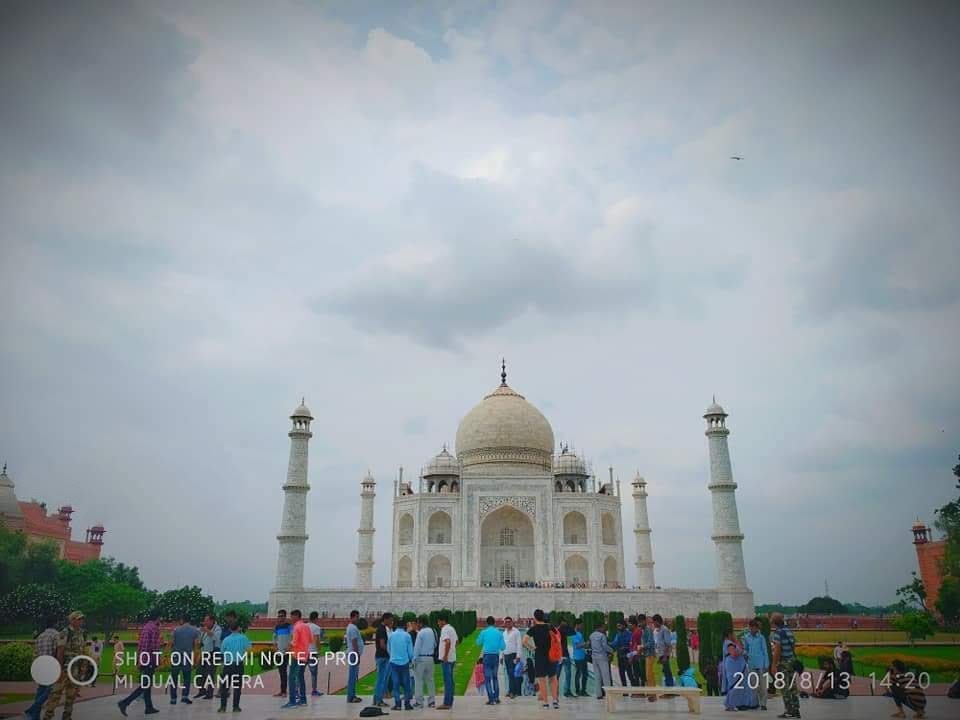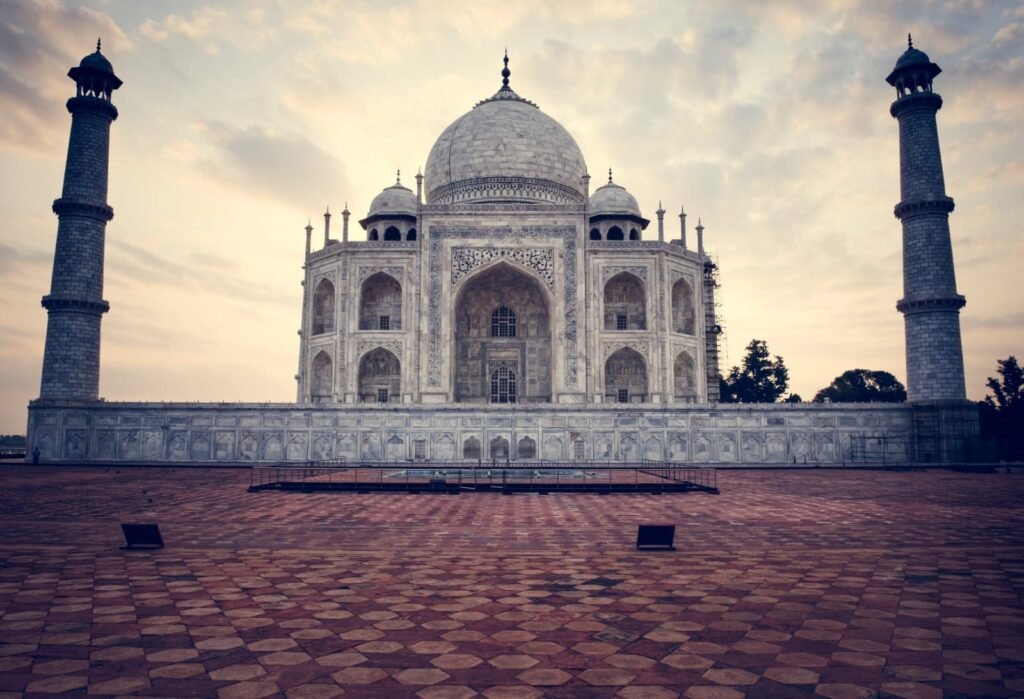The Taj Mahal, an architectural masterpiece and one of the most iconic symbols of love, stands majestically in Agra, India. This splendid mausoleum, completed in 1653, is not merely a historical monument but an embodiment of a timeless romance and a paragon of artistic excellence. In this comprehensive exploration, we delve into the Taj Mahal’s history, architectural brilliance, and its cultural significance, while unraveling the story behind its creation and enduring allure.
Historical Background
The Taj Mahal was commissioned by Mughal Emperor Shah Jahan in memory of his beloved wife, Mumtaz Mahal. Mumtaz Mahal, born Arjumand Banu Begum, was Shah Jahan’s favorite consort. Their love story is legendary, characterized by profound affection and mutual respect. Mumtaz Mahal passed away in 1631 during childbirth, leaving Shah Jahan devastated. To honor her memory, he resolved to build a monument that would reflect his undying love.
Construction of the Taj Mahal began in 1632 and took approximately 22 years to complete. The project employed thousands of artisans, craftsmen, and laborers, many of whom were brought from different parts of the Mughal Empire and beyond. The intricate details and grand scale of the mausoleum reflect not only Shah Jahan’s devotion but also the pinnacle of Mughal architectural innovation.

Architectural Marvel
The Taj Mahal is celebrated for its exquisite architecture, which harmoniously blends elements from Islamic, Persian, Ottoman Turkish, and Indian architectural styles. The central dome, which rises to about 35 meters, is the most striking feature of the mausoleum. It is flanked by four minarets, each standing approximately 40 meters tall, which were designed not only as decorative elements but also to provide a sense of balance and symmetry to the structure.
One of the most impressive aspects of the Taj Mahal is its use of white marble, sourced from the quarries of Makrana in Rajasthan. This marble is renowned for its quality and its ability to reflect light, which contributes to the mausoleum’s ethereal beauty. The marble surface is adorned with intricate inlay work using semi-precious stones, creating elaborate floral patterns and geometric designs. This technique, known as pietra dura, is a hallmark of Mughal art and showcases the high level of craftsmanship involved.
The Taj Mahal’s layout is carefully designed with a symmetrical garden, divided into four parts by reflecting pools and walkways. This garden, known as the charbagh, symbolizes paradise and is a common feature in Mughal garden design. The central pool reflects the image of the Taj Mahal, enhancing its grandeur and creating a serene atmosphere. The surrounding complex includes a mosque, a guest house, and extensive gardens, all contributing to the overall harmony of the site.

Cultural and Symbolic Significance
Beyond its architectural splendor, the Taj Mahal holds profound cultural and symbolic significance. It stands as a testament to the Mughal Empire’s artistic and engineering prowess. The monument represents the zenith of Mughal architecture, combining aesthetics with spiritual symbolism. Its design elements, such as the central dome and minarets, symbolize the heavens and the earthly realm, reflecting the Islamic concept of paradise.
The Taj Mahal is also a symbol of eternal love and commitment. The narrative of Shah Jahan’s devotion to Mumtaz Mahal resonates with visitors from around the world, making it a universal emblem of romantic affection. This enduring symbol has captivated countless admirers, poets, and artists, further embedding the Taj Mahal in global cultural consciousness.

Conservation and Challenges
Over the centuries, the Taj Mahal has faced numerous challenges, including environmental factors and human activities. Pollution, particularly from industrial emissions and vehicular exhaust, has led to the discoloration of the marble, turning it a yellowish hue. Efforts to preserve the monument have included regular cleaning and restoration projects, often utilizing traditional techniques to maintain the integrity of the original materials.
The Archaeological Survey of India (ASI) oversees the conservation of the Taj Mahal, ensuring that both the structure and its surrounding gardens are well-maintained. In recent years, measures have been implemented to reduce air pollution in the Agra region, including restrictions on industrial activities and vehicular traffic near the monument.
Global Recognition and Tourism
The Taj Mahal’s beauty and historical significance have earned it a place among the Seven Wonders of the World and a UNESCO World Heritage Site designation. It attracts millions of visitors annually, making it one of the most popular tourist destinations globally. The site’s appeal extends beyond its visual splendor; it offers a profound experience of history, art, and emotion.
Tourism has played a crucial role in the local economy, providing employment and stimulating growth in Agra. However, the influx of tourists also necessitates careful management to balance preservation with accessibility. The local authorities have implemented measures to ensure that visitor numbers are regulated, and conservation efforts are prioritized.

The Taj Mahal remains an enduring symbol of love and architectural brilliance, captivating all who behold its splendor. Its intricate design, cultural significance, and the love story behind its creation combine to make it a unique and timeless masterpiece. As we marvel at this architectural wonder, we are reminded of the enduring power of art and love, and the ability of a single monument to transcend time and continue to inspire and captivate generations.
The Taj Mahal is not merely a structure of marble and stone but a living testament to the artistic achievements of the Mughal Empire and the profound emotions of its creators. As we reflect on its history and significance, we gain a deeper appreciation for the timeless nature of this extraordinary monument, which continues to stand as a beacon of beauty, love, and human creativity.












4 thoughts on “The Taj Mahal: A Timeless Tribute to Love and Artistry”